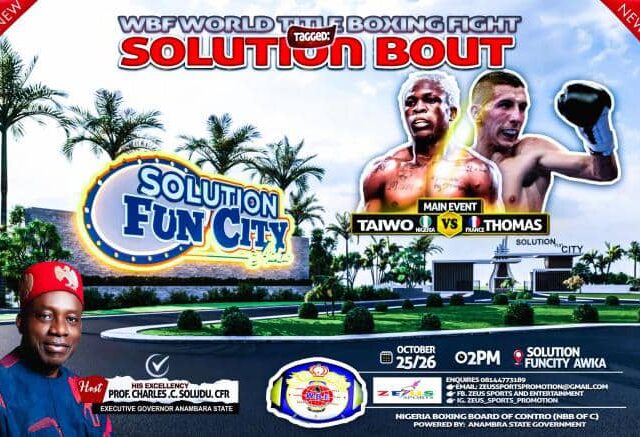The high cost of Nigeria’s 35 crude oil grades including Bonga, Agbemi and others has been attributed as the reason why Dangote Refinery resorts to buying crude oil from the United States.
Other factors attributable to Dangote Refinery going to the US to source for feedstock include regional refining margin and low cost of freight from other crude sources.
Dr. Kaase Gbakon, an energy expert explained that while the Nigerian market eagerly anticipates gasoline from the plant, the Dangote refinery has exported aviation/jet fuel to Europe, delivered diesel and aviation fuel into the domestic market and West African market, and shipped naphtha, fuel oil and gasoil to Europe and Asia.
In another strategic move, plans have been announced to build a terminal receiving facility in the Caribean to access the North American market and expand the refinery’s own storage facility by 600 million litres to 5.3 billion litres.
Gbakon said that other than declining domestic oil production, which had been a factor, refinery economics has also been identified as a reason for the refinery’s imports of WTI.

At a recent webinar on Dangote Refinery held earlier today, the focus was on the decision to import WTI crude to the Dangote Oil Refinery against the backdrop of refinery economics.
KEY TAKEAWAYS
- Dangote refinery announced the purchase of 2 million bbls/month of WTI over 12 months from the US to start and run the 650kpd refinery. This is about 10% of the refinery’s capacity.
- Other than declining domestic oil production, refinery economics has also factored as a reason for the imports of WTI to the refinery.
- The Interaction of refined petroleum product value, crude cost, refinery capital, and operating cost determines refining economics.
- Bonga, one of 35 Nigerian crude grades, has consistently been priced at a premium to WTI, reaching an average of ~$ $20/bbl in 2012. The year 2023 closed with Bonga priced at a $6/bbl premium to WTI.
- The Dangote refinery will always have to optimize its operations to maximize its margin subject to different constraints.
INTRODUCTION
The 650kbpd Dangote refinery in Nigeria recently placed a tender for 2 million barrels/month of WTI crude for 12 months. “We can’t wait…” Aliko Dangote, 80% owner of the leviathan plant said in an interview with The Africa Report – referring to insufficient crude oil feedstsock supply from Nigeria’s own oil fields.
While the Nigerian market eagerly anticipates gasoline from the plant, the Dangote refinery has exported aviation/jet fuel to Europe, delivered diesel and aviation fuel into the domestic market and West African market, and shipped Naphtha, fuel oil and gasoil to Europe and Asia. In another strategic move, plans have been announced to build a terminal receiving facility in the Caribean to access the North American market and expand the refinery’s own storage facility by 600 million litres to 5.3 billion litres.
Other than declining domestic oil production, which I had earlier written about here, refinery economics has also been identified as a reason for the refinery’s imports of WTI. In this article, we will explore the nuances of refining economics to understand the refinery’s strategic choices.
BASIC REFINERY ECONOMICS
The economics of refining is driven by three main factors:
- Refined Petroleum Product Value: This depends on the quantity of refined products, the ex-refinery gate product pricing, product demand. The value of one barrel of all the refined products from a refinery is the Gross Product Worth (GPW)
- Crude Cost to the refinery: This is dependent on the quality of crude, global supply/demand dynamics of oil, cost to transport the crude to the refinery, duties (if any) paid on the crude supplied. Typically, feedstock costs account for between 80% – 90% of the cost profile of a refinery.
- The Cost of Refinery Operations: This is determined by the refinery complexity, refinery plant efficiency, and the taxes to which the plant is exposed.
The Interaction of refined petroleum product value, crude cost, refinery capital, and operating cost determines refining economics.
A refinery’s performance is assessed by its gross refining margin, which is simply the difference between its total petroleum product value and the cost of crude delivered to it.
BUY LOW, SELL HIGH
Having understood the determinants of the refinery economics, we can expect that a refiner will seek the “cheapest” crude diet that it can process while trying to maximize the total value of refined products it processes.
Crude Premium
Nigeria has 35 crude oil grades, and the Dangote refinery with a complexity of 10.5 can process a crude diet which includes African crude grades, Middle Eastern Arab Light and US Light Tight crudes.
Some of Nigeria’s well known crude grades are: Bonga, Bonny, Forcados, Agbami. The earliest oil delivery to the Dangote refinery was 1 million barrels of Agbami oil grade by Shell Trading & Shipping Company.

The graphic indicates that prior to 2005, Bonga priced at a discount to WTI. However, after 2005, Bonga has consistently priced at a premium to WTI reaching as high as ~ $20/bbl average in 2012. The year 2023 closed with Bonga priced at $6/bbl premium to WTI. These are spot prices extracted from the OPEC Annual Statistical Bulletin.
Meanwhile, Agbami priced at a premium to WTI between Jan 2024 and May 2024 as seen in the table below: Trend of Agbami and WTI prices Jan – June 2024
 However, as of June 2024, Agbami was at a $2.95/bbl discount to WTI.
However, as of June 2024, Agbami was at a $2.95/bbl discount to WTI.
There is advantage to having access to the lower priced feedstock and clearly WTI wins on this one!
Freight Rates
But the crude will have to be transported to the Dangote refinery. To capture the cost of this supply chain link, I present historical dirty freight rates to West Africa (WAF). Dirty tankers are so-called because they transport crude oil and haul high-sulfur petroleum products such as residual fuel oil.
Fig. 2 shows freight rates on two routes:
a. between WAF and the United States Gulf Coats (USGC)

b. WAF and the Far East (EAST)
It also shows the freight difference between the WAF-EAST and the WAF-USGC routes.
Fig. 2: Dirty Freight Rates on WAF/EAST and WAF/USGC Routes
Since 2011, the WAF-EAST route has mostly been at a premium to the WAF-USGC route. In other words, the cost of transporting crude from the far East to West Africa is higher than moving crude from the US Gulf Coast to West Africa. However, the trend was reversed in 2023 when freight rate on the WAF-USGC route averaged $0.10/bbl higher than the rate on the WAF-EAST route.
Regional Product Prices
Given that the Dangote refinery will export significant volumes of refined products, we illustrate the prices of different products in regional hubs around the world. The inclination of a refinery is to export into the highest priced market possible.
Table 2 shows the price of gasoline, diesel, and fuel oil—three very important refinery products—in three major hubs worldwide.
Table 2: Spot Prices of Refined Products in Major Trading Hubs

Due to space constraints, I have shown the prices every decade since 1980. However, I think the point can be made that the products are priced differently in each market.
Roughly speaking, gasoline tends to attract the highest prices in Rotterdam. Fuel oil tends to be the highest priced in Singapore, while diesel has been the highest priced in different markets.
Regional Refinery Margins
Regional refinery margins provide a sense of the refineries’ profitability in different regions of the world. It is a “synthetic metric” estimated based on the regional spot prices of refined products, the price of the regional marker crude, and an assumed “typical” configuration in the region.
Figure 3 shows the refinery margins from 2000 to 2023 for the USGC, Singapore and NW Europe.
Fig. 3: Regional Refining Margins
 Notice that the refining margin in the USGC has tended to be higher than what is obtained in Northwest Europe and Singapore. This is due to the assumed typical USGC configuration, which is a high-complexity refinery that produces high volumes of premium products.
Notice that the refining margin in the USGC has tended to be higher than what is obtained in Northwest Europe and Singapore. This is due to the assumed typical USGC configuration, which is a high-complexity refinery that produces high volumes of premium products.
Margins peaked in 2022 at $28/bbl in the USGC, $16/bbl in Northwest Europe and $11/bbl in Singapore.
OPTIMIZATION: THE NAME OF THE GAME
Several moving parts are required for the Dangote refinery to return healthy margins, some of which we have examined in this article. While the source and quality of crude feedstock are clearly important, other factors such as freight, regional product prices, and the government’s fiscal and industrial policy are also relevant.
Due to the varying differentials between alternatives (WTI wasn’t always a discount to Bonga, USGC-WAF freight isn’t always lower than USGC-EAST), the Dangote refinery will always have to optimize its operations to maximize its margin subject to different constraints.
Indeed, the decision to access WTI is supported by the price discount of WTI relative to Nigeria’s Bonga and the freight advantage of importing from the USGC (instead of the Far East, for example). Meanwhile, the decision to establish a presence in other key jurisdictions is a strategic move to tap into high-value markets. Dangote himself hinted at this at the Afreximbank Egypt Bank’s Trade and Investment Forum in the Bahamas.
“I know the price in the Caribbean in terms of petroleum products is very high. We produce it cheaply. We can always bring it here. We can set up a terminal and we’ll be able to fix their needs.”








Muchas gracias. ?Como puedo iniciar sesion?
I recently cast-off this locality to identify repiping service , and I couldn’t be happier with the results. The search was straightforward, and I appreciated the ornate profiles and bloke reviews in behalf of each contractor. It мейд comparing options and reading round other clients’ experiences easy. The contractors I contacted were willing, efficient, and offered competitive quotes. This milieu is a unbelievable resource for anyone needing trusty place renew services. Warmly recommended payment its explicit interface and quality listings!